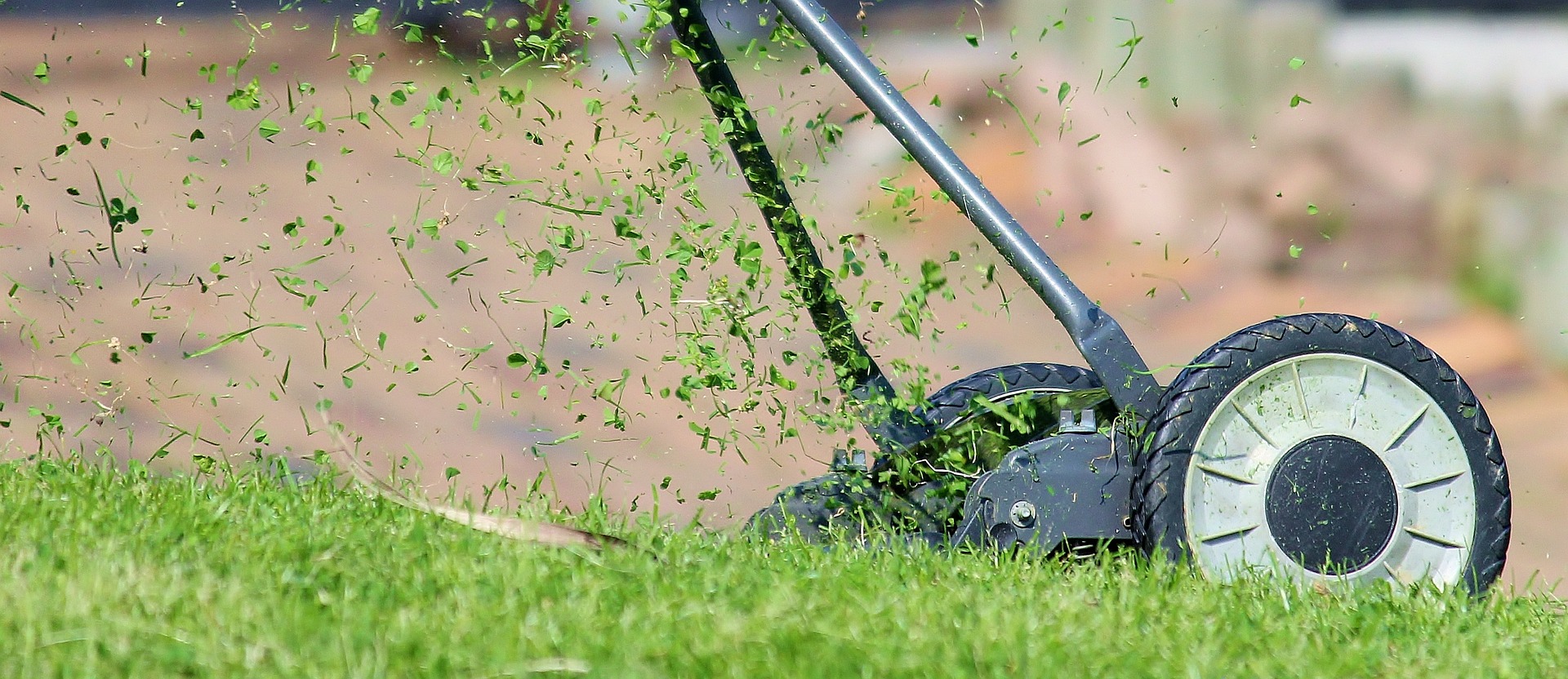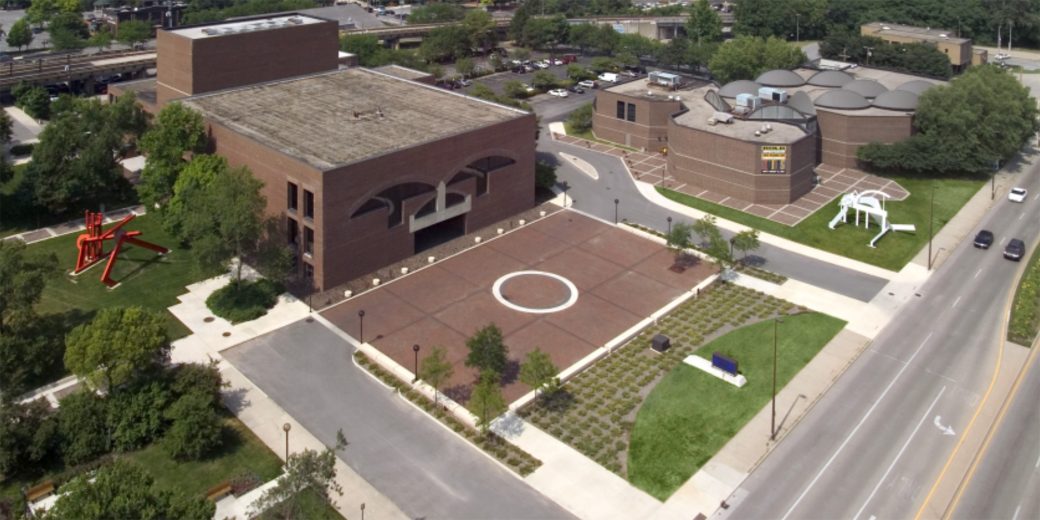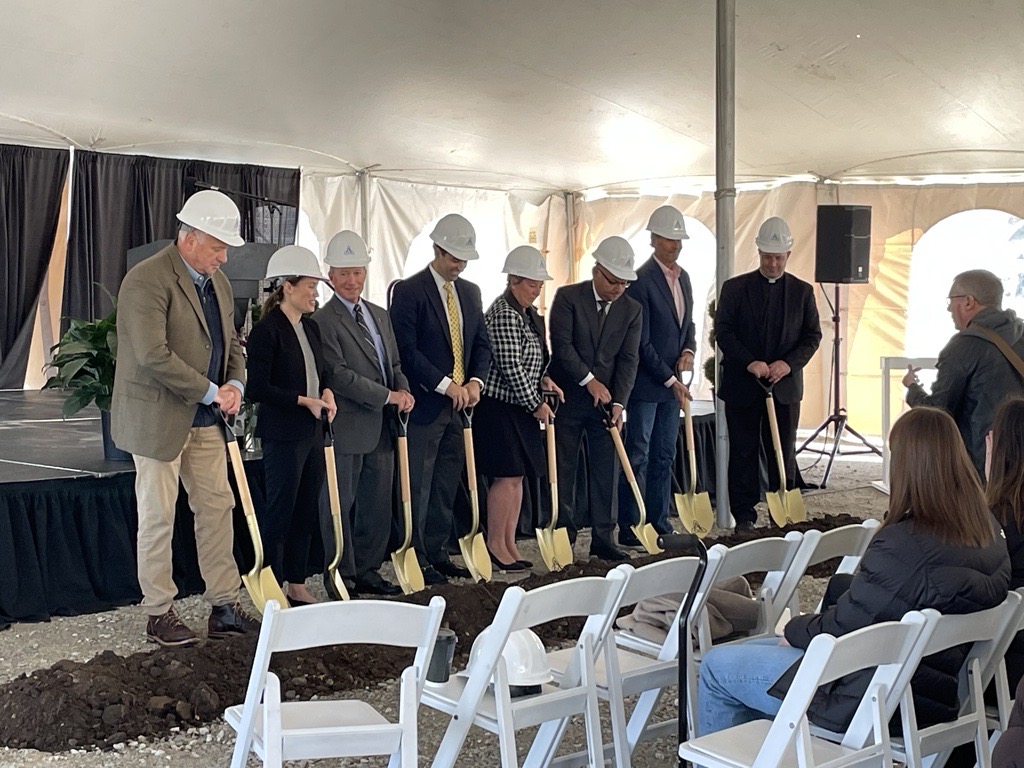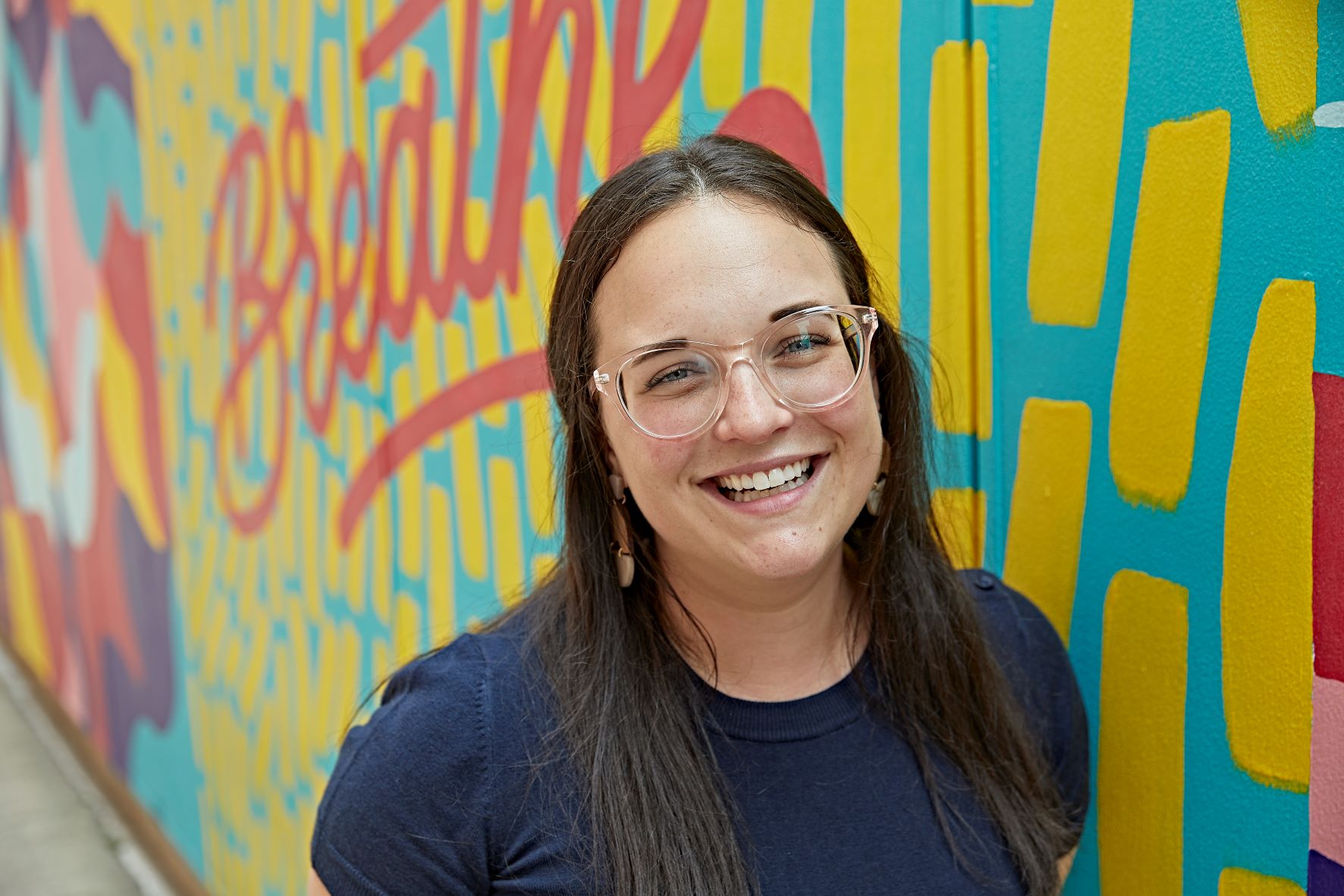A groundbreaking for Ascension St. Vincent's new micro hospital took place on November 8, 2022 in the Discovery Park district of Purdue.

By Zachary Benedict, AIA, LEED AP
Over the last decade, talent development has become a critical concern for the growth of local economies. Communities across the country have found themselves in a hyper-competitive war to attract and retain creative talent for their expanding workforce. And while countless strategies and seemingly endless incentives have been explored, they rarely acknowledge the historic role “talent” has played in an individual’s sense of belonging to the larger community.
How can our understanding of belonging shape our approach to talent retention? It’s a complicated question, but a valid concern if we want to develop a sustainable and realistic approach to nurturing regional talent. However, the answers might not be where we think.
When communities look to define economic strategies, they frequently explore ways to enhance the “quality of life” of their citizens. It’s a common phrase that is often mentioned with little definition. The World Health Organization defines the term as “an individual’s perception of their position in life in the context of the culture and value systems in which they live and in relation to their goals, expectations, standards, and concerns.” And while indicators such as wealth, employment, education, and security are often utilized to measure this perception, a much more instinctive metric exists – cooperation.
Repetition Matters
Cooperation is the currency of the human species. It’s an evolved survival mechanism that instills within us a deep-seated desire to value a sense of contribution to our tribe or community. We want to be a part of a group that recognizes and benefits in some small way from our talents. However, it has become increasingly difficult to define our value within a physical community while navigating an ever-expanding virtual economy. To further exacerbate the problem, most solutions aimed at enhancing our “quality of life” tend to ignore the basic formula for developing this sense of belonging.
For a group to accept an individual as a valued member, it seems two key criteria must be met. That individual must exhibit an ability to be trustworthy and talented – a pair of very simple attributes that can evolve over time. It’s these two features that define our reputation within a community and, as they grow, so does our sense of belonging within the group. The challenge is that many communities have created a series of hurdles that affect our ability to exhibit these traits at different moments over the course of our lifetime.
The most efficient way to define a reputation within a group is through repetition. This is true whether you are at school, at work, or within the neighborhood. The more frequently we can convince others that we are trustworthy and talented, the more opportunities we will have to solidify that reputation. It’s why cities, as opposed to rural settings, have traditionally been so efficient in inspiring economic and cultural growth.
It’s no mystery why urban areas are effective at nurturing innovation and creativity. They provide accessible platforms for repetitive (and often unplanned) encounters within dense networks of people. Environments like the traditional Main Street didn’t simply provide people access to goods and services. It allowed for the free and regular exchange of cooperative behaviors between a diverse collection of people, providing opportunities to grow both trust and talent.
In that way, the public realm is an extremely powerful tool – a physical place that has traditionally functioned as the primary mechanism for cooperation. It’s where children learn social roles, where grandparents share stories, and new members adapt to the cultural traditions of their new tribe. It’s these frequent experiences that help onboard us into a community and solidify our sense of belonging within the larger group.
These places serve as the gateway to enhancing our quality of life. But as the physical presence of the public realm has shrunk, and our public discourse has gravitated towards virtual networks, the amount of opportunities these encounters once provided have dwindled – systematically limiting our ability to belong in the process. It’s been a persistent and complicated problem plaguing communities over the last century. And challenges rest in understanding how we can repair this system. How can we better understand these concerns at the local level?
A simple way to think about this is with a lawnmower.
Two summers ago, my son was finally old enough to mow our grass. We spent the summer making sure he understood the skills needed to do the job effectively. He learned how to operate the equipment safely, how to mow straight lines in the grass, and how to clean up once the job was complete. When he was done, he felt a sincere sense of accomplishment. He knew this wasn’t your typical child’s chore. This was a “real” job that took skill and discipline. He mowed that entire summer. But then something interesting happened.
The next spring, when the grass got to a certain height, my neighbor came up to me and asked if my son could mow his yard. He had known him since he was a little boy and, after watching him mow the previous summer, wondered if he wanted to earn some extra money. My son was astonished by the invitation. “He wants me to mow his yard?!,” he shouted. I said, “I think so. But you need to go over to his house and talk to him about your price and what times you are available to do the job.” It was his first taste of entrepreneurism. It was also the first time that someone outside his immediate family acknowledged his talents in a real way. By the end of the summer, he was posting flyers throughout the neighborhood for his new lawnmowing business.
Many of us have had a similar experience as a child. But fewer and fewer children today have this opportunity. My son is lucky. He lives in an active neighborhood where adults know each other. He sees people borrow cups of sugar. He’s helped cook food and deliver it to sick neighbors. He’s collected mail for families that were out of town on vacation. People know him. They call him by name and ask him how he is doing in school. They wave when he drives by on his bike, and they watched when he started mowing the yard.
It’s these repetitive encounters that allow us to contribute to a community – no matter our age or skill set. With each occurrence, we refine our reputation and exhibit to others that we are both trustworthy and talented. As that combination is recognized and appreciated by others, our sense of belonging grows, and so does our talent.
Creativity is Contagious
A problem facing this “quality of life” discussion is that our ability to belong is limited by the group’s perception of talent. Social pressures, especially in adulthood, challenge the idea of talent in a real and counterproductive way. Intelligence is villainized. Creativity is overlooked. Innovation is undervalued. As we age, many of us grow skeptical of our own talents, though we didn’t always feel that way.
If you ask a room full of kindergartners, “How many of you are good dancers?” or “How many of you can draw really well?” and the response will be an entire room full of small hands raised emphatically into the air. Some will even offer to demonstrate for you. The enthusiasm is infectious.
Now imagine walking into work next week and asking your coworkers those same questions. Picture sitting a dozen adults in a room and asking them if they could draw or dance. The response is often utter silence. Some will quickly look at their shoes to avoid eye contact in hopes the conversation will end soon. Others will attempt to break the silence by explaining to others how untalented they are. What happens to us? Where does this fear come from? Where do our talents go?
One issue is that the shrinking public realm that many communities have experienced has made it difficult to understand probability. We are inundated with brilliant people performing on television and social media platforms on a daily basis. And we find ourselves amazed by their abilities, convincing ourselves that this person is a “one-in-a-million” talent. Why? Because they are on TV? Because random experts say they are amazing? Because they seem so confident in their dancing abilities? So was a room full of kindergartners.
We don’t understand how talent is distributed throughout our community because we struggle to have repetitive experiences where we can witness the abilities of our neighbors. We struggle to know the probability that someone so talented could live on our street or drink coffee at our favorite café. The reality is that it’s more probable than we could likely imagine.
This is why physical places that feature creativity are so critical to talent development in modern communities. It’s also why so many talented people relocate to communities that have more opportunities to showcase their abilities. Talent retention isn’t necessarily about developing ways to subsidize creative endeavors. It’s reliant on a community’s ability to provide readily accessible platforms to experience the talents of local people and dispel the myth that creative people don’t live within our community.
Often within this discussion, there is confusion regarding the difference between people and products. Creative economies benefit from experiencing a wide variety of products from outside their community. Visiting a touring exhibit at an art museum or watching a Broadway show visiting the local theater allows the community access to talent that they wouldn’t otherwise experience.
Seeing creative things isn’t the same as knowing creative people.
Imagine you’re an aspiring playwright. Would it be more exciting to see a traveling production of Hamlet in your hometown or realize Shakespeare grew up down the street? Which is more valuable in convincing you of what you’re capable of? Which is more helpful in supporting the notion that your community appreciates and cultivates talent? We want to know that Shakespeare could live down the street. For the ambitious ones, we want to be sure we know where he lives so we can mow his yard.
This is what makes venues like the Arts Campus Fort Wayne important. From its inception, the Arts United Center facility was designed and operated as a community theatre – a place for local people to create and perform shows for the community to enjoy. It’s a unique, shared relationship between the audience and artist. It’s not a place to simply see creative events. It’s a place to support creative neighbors, validate their talents and strengthen their reputation within the community they belong to.

Arts Campus, Fort Wayne Indiana
After almost 50 years of operation, its presence has expanded beyond its physical walls into an entire campus focused on providing repetitive creative experiences. Arts Campus Fort Wayne is “a state-designated cultural district and a rare treasure of creative wealth. The district is emerging as the regional epicenter for arts and cultural activity – and it is strong, welcoming, and distinctly Fort Wayne. Arts Campus Fort Wayne connects the city to the arts and helps the region achieve national recognition as a hotspot for talent, creativity, and innovation across all industries. Anchored by some of Northeast Indiana’s premiere arts and culture nonprofits, Arts Campus Fort Wayne includes seven structures, a public park, and an outdoor market. As one of the community’s most important assets, Arts Campus Fort Wayne resident and presenting organizations serve a total audience of more than 533,000 people each year. The community gathers here to experience festivals, music, dance, cinema, theatre, visual art, outdoor markets, local history, and more throughout the year.”
It’s an environment that other sectors within our community could learn from. How could our local talents in healthcare, defense, or automation have a similar platform for over a half-million neighbors a year to visit and appreciate the creative individuals operating within those industries? A common strategy is to refine these activities into a formal innovation district. The challenge is in not over-complicating it.
In their book, The New Localism: How Cities Can Thrive in the Age of Populism, Bruce Katz and Jeremy Nowak mention that these districts “have emerged as a new spatial platform for the invention, deployment, and prototyping of new technologies, products, and processes. […] They offer vibrant and vital gathering spaces that knit people, products, and ideas together. They also represent the convergence and reinvention of three spatial archetypes: the downtown, the suburban office park, and the college campus.”
The danger with this approach, and the deficiency with some established innovation districts, is they quickly evolve into monocultures. They become places for engineers to talk about engineering. They seldom accept any responsibility in actively engaging the larger community outside their defined expertise or focus, segmenting the creative sector instead of inserting themselves directly into the public realm.
We all want to belong to something. We can’t undervalue the importance of giving everyone, regardless of age or ability, a chance to show they are trustworthy and talented. It’s those experiences, those early attempts to define one’s reputation, that shape how we perceive the world around us.
Creativity is contagious – but it requires exposure to spread. We need to demystify innovation and retain confidence in our own abilities. Our communities need to find ways to redefine the public realm as a platform for cooperation. We need to figure out how to give more children a chance to mow their neighbor’s yard. We need to get better at letting the community know just how many Shakespeares live on their street. And we need to all admit we’re still pretty good dancers when we want to be.


